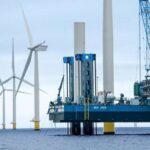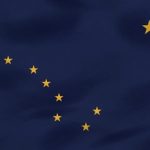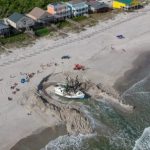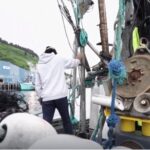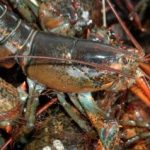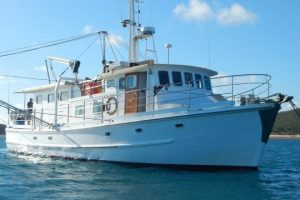Tag Archives: Alaska Department of Fish & Game
Gov. Dunleavy requests five new fishery disasters including Kodiak’s 2024 pink salmon season
 On Jan. 30 Governor Mike Dunleavy submitted five new requests for federal fisheries disaster assistance for last summer’s salmon season. That includes commercial salmon fisheries on the Alaska Peninsula, Kodiak, Chignik, Lower Cook Inlet and Prince William Sound. The state accounts for roughly half, 26 out of 53, of the fishery disasters declared around the country since 2020, which include a variety of species like salmon, crab and Pacific cod. In Kodiak, fishermen harvested 7.6 million pinks last summer, which was less than 40% percent of the ten-year average of 20.4 million fish. That meant last summer was one of the lowest valued commercial pink salmon seasons on record for Kodiak Island. more, >>CLICK TO READ<< 07:57
On Jan. 30 Governor Mike Dunleavy submitted five new requests for federal fisheries disaster assistance for last summer’s salmon season. That includes commercial salmon fisheries on the Alaska Peninsula, Kodiak, Chignik, Lower Cook Inlet and Prince William Sound. The state accounts for roughly half, 26 out of 53, of the fishery disasters declared around the country since 2020, which include a variety of species like salmon, crab and Pacific cod. In Kodiak, fishermen harvested 7.6 million pinks last summer, which was less than 40% percent of the ten-year average of 20.4 million fish. That meant last summer was one of the lowest valued commercial pink salmon seasons on record for Kodiak Island. more, >>CLICK TO READ<< 07:57
Commercial fish report shows impact of set-net closure
 A recent report from the Alaska Department of Fish & Game shows the impact of the closure of a prominent fishery on the 2023 season for the commercial salmon industry in Upper Cook Inlet. Set-netters are worried about the future of their fishery, and the possible long-term impacts of over escapement. In Upper Cook Inlet, the report says, the 2023 commercial salmon harvest was about 40% lower than the 20-year average. Commercial fishermen caught 1.9 million salmon in the upper inlet, compared to the 20-year average of 3.1 million. Fish & Game attributes most of that decline to the closure of the east side set-net fishery, which the department closed before the season even began in anticipation of low king salmon numbers. >>click to read<< 13:04
A recent report from the Alaska Department of Fish & Game shows the impact of the closure of a prominent fishery on the 2023 season for the commercial salmon industry in Upper Cook Inlet. Set-netters are worried about the future of their fishery, and the possible long-term impacts of over escapement. In Upper Cook Inlet, the report says, the 2023 commercial salmon harvest was about 40% lower than the 20-year average. Commercial fishermen caught 1.9 million salmon in the upper inlet, compared to the 20-year average of 3.1 million. Fish & Game attributes most of that decline to the closure of the east side set-net fishery, which the department closed before the season even began in anticipation of low king salmon numbers. >>click to read<< 13:04
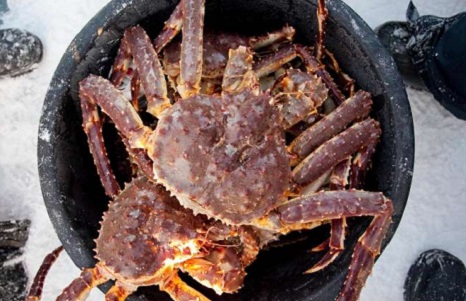
Bristol Bay red king crab, tanner crab fisheries open Sunday
The Bristol Bay red king crab fishery is back on track, after being closed for two years, with a total allowable catch of 2.15 million pounds – just a bit lower than when it was last opened in 2020 at 2.6 million pounds. The announcement on Friday, Oct. 6, was cheered by crab captains and Alaska Bering Sea Crabbers, as a way to get back out doing what they loved, pay some bills, and keep crew working, all while keeping the crab resource sustainable for generations to come. Veteran crabber Glenn Casto, captain of the FV Pinnacle, called it a start in the right direction, that will help pay some bills and help out crew. >>click to read<< 08:20

Southeast’s 2022 commercial salmon harvest was half as large last year’s, but worth millions more
Commercial fisherman in Southeast hauled in just over 29 million fish across the five salmon species during the 2022 season – 17.5 million pink salmon, 9.3 million chum, 1.2 million coho, 1.1 million sockeye, and 257,000 king salmon. Even though the total harvest was half of last year’s (58 million catch), the total value at the docks for Southeast increasedby $12 million this year, to $144 million. That rise in value came primarily because the price per pound of chum salmon increased by half this year compared to last year, at a region-wide average of $1.18 per pound. >click to read< 08:34
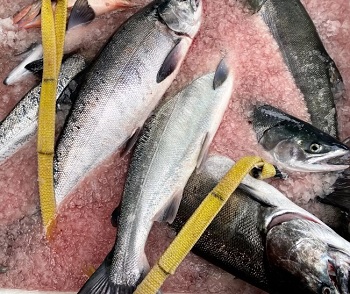
A rare summer-long chinook opener was not enough to lure SE trollers away from Chumageddon
Chinook trollers in Southeast may have left a sizeable portion of their allocation in the water when the summer season wrapped up on September 20 – but that doesn’t mean it was a bad year. Instead, it was a rather unusual year. “Being able to retain chinook for the entire summer is not something that they’re used to,” said Grant Hagerman, troll management biologist for the Alaska Department of Fish & Game in Sitka. Commercial trolling for king salmon was open all summer, with only three days off to allow silver salmon – or coho – time to escape into their natal streams, lakes, and rivers. Hagerman says the long summer season wasn’t due to a lack of king salmon; rather, it was an abundance of choice. Commercial trolling has changed. >click to read/listen< 12:37

Norton Sound crab fishery bounces back with record year following fishing hiatus
The 2022 commercial crabbing season had the best harvest since 2017, according to the Alaska Department of Fish & Game. And when adjusted for inflation, ADF&G said this season’s ex-vessel value reached levels that haven’t been seen since the late 1970s and early ’80s, when the commercial fishery started in the Norton Sound. One contributing factor was the record price paid by Norton Sound Seafood Products, or NSSP, for red king crab this summer. NSSP paid $12 per pound for regional crabbers, and with a total harvest of 291,553 pounds, this summer season was considered the best crabbing the region has seen in years. >click to read< 14:27
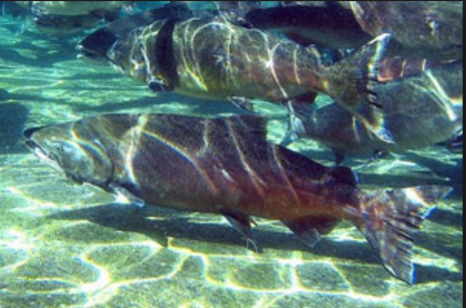
The world’s finest salmon season is now under way
Today officially inaugurates Alaska’s summer salmon season with the opening of the first Copper River salmon fishing period of the 2021 season. Beginning at 7 am, the Copper River fishing fleet, comprised of 540 small-boat, independent commercial fishing permit holders will have the opportunity to harvest highly-prized Copper River king and sockeye salmon during a short 12-hour window. Today’s catch will be delivered to Cordova’s shore-based seafood processors and flown fresh to companies and individuals across the country who have reserved exclusive rights to the season’s first fish. >click to read< 21:19
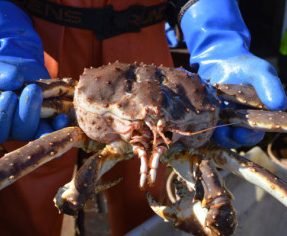
State of Crabbing in Norton Sound: Less Sea Ice, Fewer Crabs — and Fewer Crabbers
The commercial quota for winter Norton Sound crabbers this season is just over 12,000 pounds: less than half of the amount last winter, and about a third of the 2017 quota. The 150,600-pound quota for the year is broken down into 8% for winter, 7.5% for subsistence, and the remainder is for summer. That equals 12,048 lbs. for commercial and 11,295 lbs. for subsistence or CDQ fishery. Justin Leon, the assistant area management biologist for the Arctic area, based in Nome, explains the decrease has a lot to do with the latest trawl survey results from the Norton Sound. >click to read<19:34

Fleet catches a quarter of herring quota in non-competitive fishery
The Sitka sac roe herring fishery stood down on Tuesday (03-27-18), as the Alaska Department of Fish & Game carried out aerial surveys of Sitka Sound. According to a press release issued at 3:30 pm., weather during the flight was poor with 20 knot winds and snow squalls. No herring were spotted from the air. So far, ADF&G has permitted the fleet to fish twice this week in northern Sitka Sound. The fleet landed approximately 2,400 tons during a five hour opening on Sunday (03-25-18) and 400 tons during a four-and-a-half hour opening on Monday (03-26-18). >click to read< 22:44
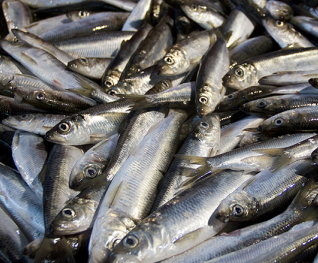
Industry tops subsistence on Board of Fisheries herring votes
In a morning of controversial deliberations at the Alaska Board of Fisheries meeting Tuesday, subsistence users weren’t successful in herring conservation measures to cut commercial fishing harvests. But a favored backup proposal, No. 106, did pass by a 6-1 vote: 4 square miles in Sitka Sound were added to a 10-square mile protected area reserved for subsistence harvest and barred from commercial fishing. >click here to read< 15:18
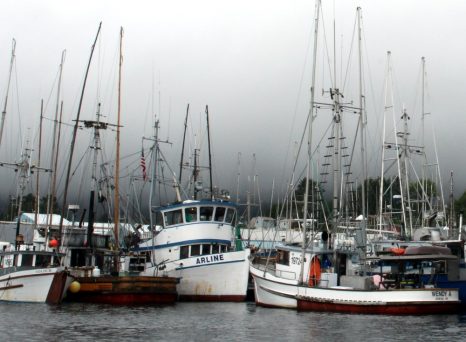
Trollers call for chinook management ‘with a scalpel, not a sledgehammer’
Fishermen in Sitka are pushing back against a proposed king salmon conservation plan that could impose deep restrictions on fishing seasons in 2018. The local Fish & Game Advisory Committee instead has offered some strategies of its own for protecting chinook returning to three major Southeast river systems. They’re calling it “management with a scalpel, instead of a sledge hammer.” click here to read the story 16:53 
Southeast gillnetters set a one-week record
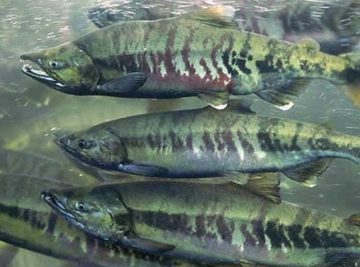 Commercial fishermen caught a historic amount of fish this week in a district south of Juneau. Statistics are still preliminary, but catch numbers for gillnetters in the Taku River-Port Snettisham district will likely set a record for the first full week of July, according to reports from the Alaska Department of Fish & Game. ADF&G is reporting that fishermen in the district caught 170,000 chum salmon from July 2 to July 8, well above the previous record for the week of 134,000 set in 2013. So far, gillnetters have caught nearly five times as many chum salmon this year compared to last year. click here to read the story 12:25
Commercial fishermen caught a historic amount of fish this week in a district south of Juneau. Statistics are still preliminary, but catch numbers for gillnetters in the Taku River-Port Snettisham district will likely set a record for the first full week of July, according to reports from the Alaska Department of Fish & Game. ADF&G is reporting that fishermen in the district caught 170,000 chum salmon from July 2 to July 8, well above the previous record for the week of 134,000 set in 2013. So far, gillnetters have caught nearly five times as many chum salmon this year compared to last year. click here to read the story 12:25
On the docks, no sympathy for deadlocked lawmakers
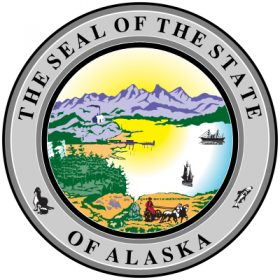 It’s a good thing our boats don’t have wheels,” Delay said, “because if they did, we’d be driving them through the front door of the Capitol.” Though he was speaking figuratively, Delay wasn’t being hyperbolic. Juneau gillnetters are frustrated. They start their season Sunday under uncertain seas: Not knowing what could happen in the event of a July 1 government shutdown, salmon management could be curtailed or shut down during the most lucrative part of the gillnet season. The Alaska Department of Fish &Game sets time limits and other regulations for salmon fishermen to ensure enough fish get upriver and past nets to spawn. Without those regulations, fishermen won’t be allowed to fish. click here to read the story 08:05
It’s a good thing our boats don’t have wheels,” Delay said, “because if they did, we’d be driving them through the front door of the Capitol.” Though he was speaking figuratively, Delay wasn’t being hyperbolic. Juneau gillnetters are frustrated. They start their season Sunday under uncertain seas: Not knowing what could happen in the event of a July 1 government shutdown, salmon management could be curtailed or shut down during the most lucrative part of the gillnet season. The Alaska Department of Fish &Game sets time limits and other regulations for salmon fishermen to ensure enough fish get upriver and past nets to spawn. Without those regulations, fishermen won’t be allowed to fish. click here to read the story 08:05
Strong sockeye run for Upper Cook Inlet, weaker run for Lower Cook Inlet
 The Upper Cook Inlet commercial fishing industry will see a spike in sockeye salmon harvest this year, if the Alaska Department of Fish & Game’s forecast holds true. Fish & Game forecast a total of 7.1 million sockeye salmon to return to the Upper Cook Inlet streams and rivers, with 4.1 million allocated to commercial harvest. That number is about 1.1 million more than the 20-year average and about 1 million more than the total commercial harvest in 2015. Most of the increase will be fish headed for the Kenai River, which will see approximately one million more sockeye salmon than the 20-year average, according to Fish & Game’s forecast. Read the rest here 08:27
The Upper Cook Inlet commercial fishing industry will see a spike in sockeye salmon harvest this year, if the Alaska Department of Fish & Game’s forecast holds true. Fish & Game forecast a total of 7.1 million sockeye salmon to return to the Upper Cook Inlet streams and rivers, with 4.1 million allocated to commercial harvest. That number is about 1.1 million more than the 20-year average and about 1 million more than the total commercial harvest in 2015. Most of the increase will be fish headed for the Kenai River, which will see approximately one million more sockeye salmon than the 20-year average, according to Fish & Game’s forecast. Read the rest here 08:27
140 minutes to fish 15,000 tons of Sitka Sound herring
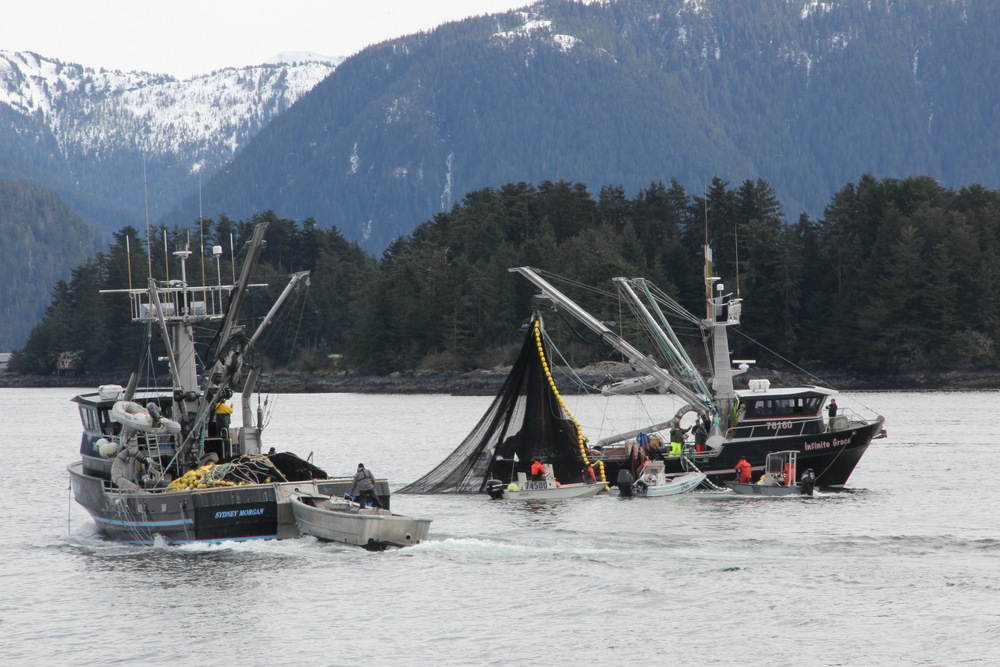 The commercial herring season opened Thursday, more abruptly than in past years. Herring seiners had about two days’ notice to get to Sitka. And then about another four hours’ notice to prep their gear. Although winter salmon trolling wrapped 10 days ago, this always feels like the opening bell of the commercial fishing season in Alaska. State biologist Dave Gordon manages the commercial herring fishery. Over the years, he has also become its voice. “Five, four, three, two, one, open! The Sitka Sound Sac Roe Herring Fishery is now open. This is the Alaska Department of Fish & Game standing by on channel 10,” Gordon announced. Read the story here 08:41
The commercial herring season opened Thursday, more abruptly than in past years. Herring seiners had about two days’ notice to get to Sitka. And then about another four hours’ notice to prep their gear. Although winter salmon trolling wrapped 10 days ago, this always feels like the opening bell of the commercial fishing season in Alaska. State biologist Dave Gordon manages the commercial herring fishery. Over the years, he has also become its voice. “Five, four, three, two, one, open! The Sitka Sound Sac Roe Herring Fishery is now open. This is the Alaska Department of Fish & Game standing by on channel 10,” Gordon announced. Read the story here 08:41
No One in Alaska Died Commercial Fishing in the Past Year
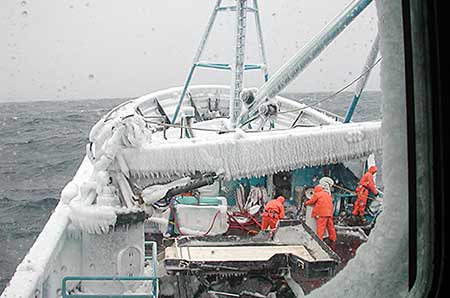 Commercial fishing has been getting safer for decades, for a lot of reasons. The U.S. Coast Guard recently announced a milestone: No one in Alaska died commercial fishing in a vessel-related incident in the past year, for the first time. That’s the federal fiscal year, Oct. 1 2014 through Sept. 30 2015. Although six commercial fishing boats sank in the summer of 2015, no one was killed. Between 1980 and 1988, an average of 31 fishermen died in Alaska each year. Read the report here 15:45
Commercial fishing has been getting safer for decades, for a lot of reasons. The U.S. Coast Guard recently announced a milestone: No one in Alaska died commercial fishing in a vessel-related incident in the past year, for the first time. That’s the federal fiscal year, Oct. 1 2014 through Sept. 30 2015. Although six commercial fishing boats sank in the summer of 2015, no one was killed. Between 1980 and 1988, an average of 31 fishermen died in Alaska each year. Read the report here 15:45
Bristol Bay fishermen to land 2 billionth salmon in 2016
 Next July, a commercial fisherman will land the 2 billionth salmon caught in Bristol Bay’s 133-year fishing history. Since the inception of Bristol Bay’s canned salmon industry in 1884, its fishermen have landed 1.99 billion salmon, 93 percent of which were sockeye. Fishermen will achieve the 2-billion-salmon milestone when they catch another 9.5 million. This will happen next season, based on the Alaska Department of Fish & Game’s recently released forecast for a harvest of almost 30 million sockeye in 2016. Read the rest here 13:58
Next July, a commercial fisherman will land the 2 billionth salmon caught in Bristol Bay’s 133-year fishing history. Since the inception of Bristol Bay’s canned salmon industry in 1884, its fishermen have landed 1.99 billion salmon, 93 percent of which were sockeye. Fishermen will achieve the 2-billion-salmon milestone when they catch another 9.5 million. This will happen next season, based on the Alaska Department of Fish & Game’s recently released forecast for a harvest of almost 30 million sockeye in 2016. Read the rest here 13:58

































